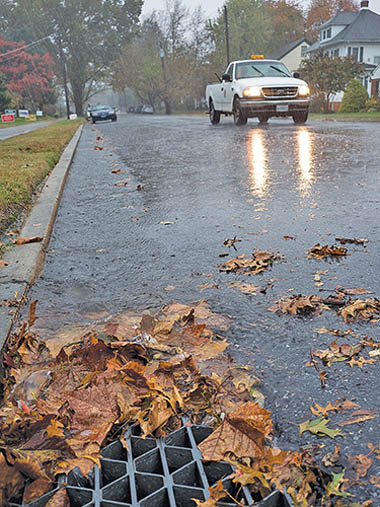Highlights of the Chesapeake Bay Watershed Implementation Plans
By Karl Blankenship on May 03, 2019
In 2010, the U.S. Environmental Protection Agency established a cleanup plan for the Chesapeake Bay known as the Total Maximum Daily Load or “pollution diet.”
It established the maximum about of nitrogen and phosphorus “loads” that could reach the Chesapeake Bay each year while allowing it to maintain water quality safe for aquatic life. Specific goals were assigned to each state and major river in the watershed. The Baywide goals, slightly refined in 2018, are:
Nitrogen
- 2009 Load: 270.9 million pounds
- 2017 Load: 249.78 million pounds
- 2025 Target: 201.41 million pounds
Phosphorus
- 2009 Load: 17.07 million pounds
- 2017 Load: 14.84 million pounds
- 2025 Target: 14.17 million pounds
States have been working since 2010 to achieve those goals. On April 12, they released draft plans showing how they plan to achieve remaining nutrient reductions by the 2025 deadline. Drawing straight comparisons between the drafts is difficult, as each presents information and data in slightly different ways, and not all provide cost estimates.
Highlights of those “watershed implementation plans,” as well as the nutrient reduction progress and goals for each state, are summarized here.
Virginia
Nitrogen
- 2009 Load: 68.1 million pounds
- 2017 Load: 58.15 million pounds
- 2025 Target: 55.72 million pounds
- Draft WIP: 48.67 million pounds*
Phosphorus
- 2009 Load: 6.99 million pounds
- 2017 Load: 6.12 million pounds
- 2025 Target: 6.19 million pounds
- Draft WIP: 5.14 million pounds*
The Virginia plan divides its goals among its major river basins: the Rapphannock, York and James basins, as well as the state’s portion of the Potomac River watershed and Eastern Shore.
The plan cautions that the goals are “ambitious and will require significant effort, sustained funding and increased technical capacity.” It also expects that more public funding and new laws will be needed. And, it anticipates that surplus nutrient reductions from wastewater treatment plants will be needed to cover potential nutrient reduction shortfalls in its stormwater and agriculture sectors.
The job will be particularly difficult in its portions of the Potomac basin and Eastern Shore, which have the greatest impact on Bay water quality. For instance, the Potomac basin would need to have nutrient management plans implemented on three times as many crop acres by 2025 as have been done since 2010, and plant three times as many acres of cover crops. Streamside grass buffers with livestock fencing would have to increase by 14-fold. The Eastern Shore would require similar ramp-ups.
To help cover likely shortfalls in those basins, the plan is counting on over-performance in other basins, particularly the James River, where a number of wastewater treatment plants are slated for upgrades.
In some cases, the plan calls for backup from the state legislature if progress falls short. For instance, the plan aims for nutrient management plans on 85% of all cropland and says the state would pursue legislation making it a requirement for all operations larger than 50 acres that apply fertilizer, manure or sewage sludge. The requirement would only be triggered if the state is not on a trajectory to meet the 85% goal by 2025.
Likewise, the plan sets a goal of excluding livestock from all streams in the state and says the state will pursue legislation to require it, though it did not establish a time frame for doing so.
The WIP also calls for establishing a workgroup to explore whether the state’s Chesapeake Bay Preservation Act, which gives local governments more regulatory authority to protect water quality, should be extended to areas west of Interstate 95.
*Meeting cleanup goals requires significant nutrient reductions from the James River to offset shortfalls elsewhere. Because much of the water from the James goes out the mouth of the Bay toward the ocean, only a portion of its nutrients impact Bay water quality. Therefore, it takes significantly more reductions from the James to achieve the same water quality impact as those from other tributaries. Because of its reliance on James River reductions, Virginia’s statewide nitrogen reductions far surpass the state goal set in the TMDL in order to have the same benefit to the Bay.
Maryland
Nitrogen
- 2009 Load: 57.51 million pounds
- 2017 Load: 54.22 million pounds
- 2025 Target: 45.78 million pounds
- Draft WIP: 45 million pounds
Phosphorus
- 2009 Load: 4.05 million pounds
- 2017 Load: 3.66 million pounds
- 2025 Target: 3.68 million pounds
- Draft WIP: 3.28 million pounds
Maryland’s plan outlines activities that would lead to success but says Bay restoration will “test the collective will across seven watershed jurisdictions” to see if they can “live in harmony with the region’s natural resources.”
The majority of the state’s nitrogen reductions will come from continuing improvements from wastewater treatment plants, where discharges are projected to decrease by 4.7 million pounds a year as the last large treatment plants in the state are upgraded with nutrient control technology.
That will be closely matched by agriculture, which is expected to deliver a 4.4 million pound annual reduction. Under the plan, the state needs to increase its rate of nitrogen reductions from agriculture threefold — from 2010 through 2017, it achieved 1.4 million pounds of nitrogen reductions from farmland.
Controlling stormwater continues to be a challenge. Current permits for its nine largest jurisdictions call for a treating runoff from the equivalent of 20% of the previously untreated impervious surfaces, but jurisdictions have struggled to meet that goal. The WIP suggests that in the next 5-year permit cycle, an average reduction rate of 2% per year — half the current objective — may be more realistic.
It also said counties will be able to meet a portion of their stormwater requirements though water quality trading as “over performance in the wastewater sector more than offsets anticipated growth in the urban sector.”
The plan’s preliminary estimates say that full implementation will cost the state $273 million a year, with the largest costs incurred by wastewater, followed by stormwater. It estimates that local governments will incur an additional $1.6 billion in costs through 2025, mainly to implement stormwater programs.
Pennsylvania
Nitrogen
- 2009 Load: 112.71 million pounds
- 2017 Load: 107.31 million pounds
- 2025 Target: 73.17 million pounds
- Draft WIP: 84.74 million pounds
Phosphorus
- 2009 Load: 4.46 million pounds
- 2017 Load: 3.8 million pounds
- 2025 Target: 3.04 million pounds
- Draft WIP: 2.98 million pounds
Pennsylvania’s draft states that it “is committed to having all practices and controls in place by 2025” and says that its plan provides “reasonable assurance” that those reductions will be achieved. The submitted plan would achieve the goal for phosphorus, but not for nitrogen. The state would fall short by about one third of its goal, or 11 million pounds, and the plan does not clearly show how that gap would be closed.
The WIP says it hopes to shore up part of the shortfall by identifying nutrient control practices that have been installed, but not previously counted toward cleanup goals. The state has also launched an intensive effort to work with local officials and organizations to develop county-level plans, which is a more aggressive effort to engage local governments than has been undertaken in other states. The plan says that when that process is complete, counties may identify additional nutrient reduction opportunities. But the first two counties to complete plans, Lancaster and York, fell short of their nutrient reduction goals.
Only about a tenth of the nitrogen from the state comes from wastewater, and most of its plants have been upgraded with nutrient control technologies. That means most of the remaining reductions will have to come from agriculture and stormwater, sectors in which all states have been struggling to reduce pollution.
Noting that the shortfalls could trigger action by the EPA, the plan stresses the urgency of demonstrating progress. For instance, it says, local governments can take necessary administrative steps toward creating stormwater fees even if they cannot be levied immediately. They can also create voluntary programs to reduce lawn fertilizer, subsidize rain barrels and promote reforestation, the plan suggests.
Delaware
Nitrogen
- 2009 Load: 7.25 million pounds
- 2017 Load: 6.46 million pounds
- 2025 Target: 4.55 million pounds
- Draft WIP: 4.46 million pounds
Phosphorus
- 2009 Load: 139,723 pounds
- 2017 Load: 118,069 pounds
- 2025 Target: 108,000 pounds
- Draft WIP: 81,000 pounds
Delaware’s plan would achieve its nutrient reduction goals by 2025. The state’s nutrients overwhelmingly come from agriculture instead of stormwater runoff from developed areas or wastewater. Its largest town in the Bay watershed, Seaford, has fewer than 8,000 people. Delaware has several small wastewater dischargers but is counting on agriculture to overachieve and offset potential increases from wastewater treatment plants. Most states are approaching it the other way around, looking for reductions from wastewater to cover shortfalls in agriculture.
Recent rates of agricultural nutrient reductions would not achieve the state’s goal, so the plan calls for a sharp increase in activity. That includes planting “every eligible acre” of cropland with a nutrient-absorbing cover crop in the fall, which would triple cover crop implementation by 2025. Among other actions, the state is counting on ramped up levels of enhanced nutrient management to further reduce fertilizer applications. At the same time, it backs away from earlier goals for planting streamside buffers, citing lack of landowner interest.


